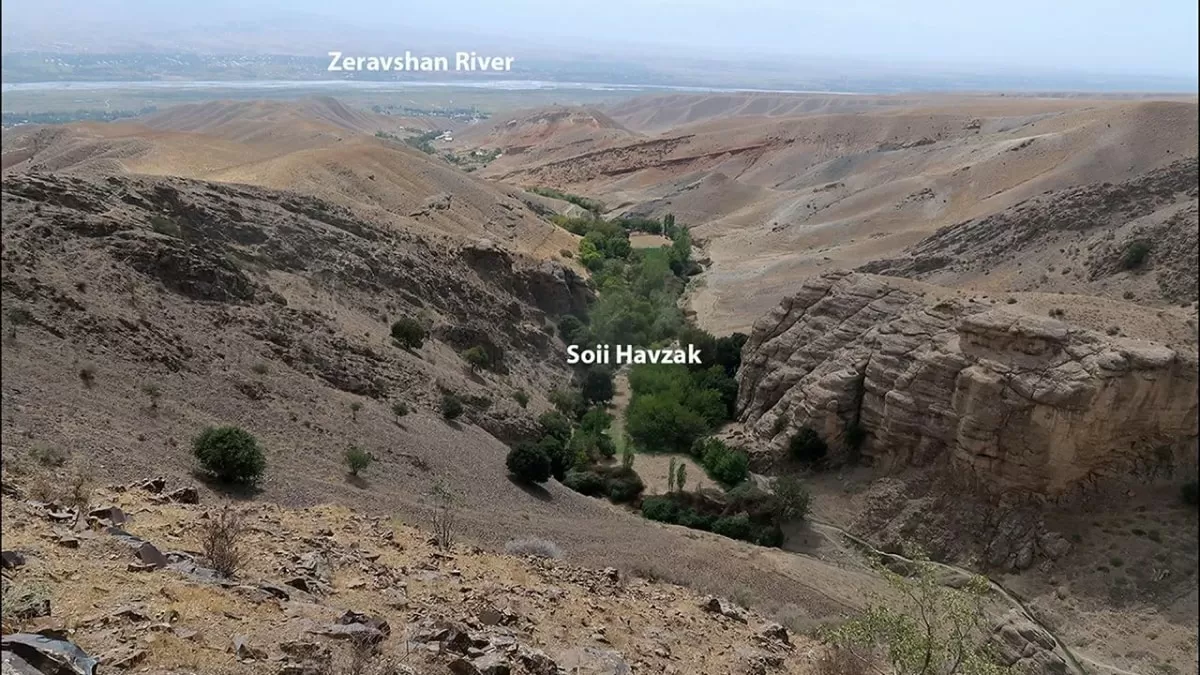A newly discovered rock shelter in Tajikistan’s Zeravshan Valley has recently captured the attention of archaeologists and researchers alike, as it provides evidence of repeated human occupation spanning over 130,000 years. This remarkable find has shed new light on the history of human migration in Central Asia, particularly in the Inner Asian Mountain Corridor (IAMC).
The rock shelter, located at an altitude of 3,000 meters above sea level, was first discovered by a team of archaeologists from the Institute of Archaeology and Ethnography of the Russian Academy of Sciences in 2018. The team, led by Dr. Andrey Krivoshapkin, has been conducting excavations in the Zeravshan Valley for over a decade, but this recent discovery has been the most significant one to date.
The site contains a plethora of artifacts and remains, including stone tools, animal bones, and hearths, that have been dated back to the Middle Palaeolithic period. What makes this discovery even more fascinating is the fact that these artifacts belong to three different human species – Neanderthals, Denisovans, and Homo sapiens. This suggests that the Zeravshan Valley may have served as a migration hub for these ancient humans, enabling them to travel and settle in different parts of Central Asia.
The IAMC, also known as the Silk Road of the Stone Age, is a vast region in Central Asia that runs from the Altai Mountains in the east to the Black Sea in the west. This corridor has been a subject of interest for researchers for a long time, as it is believed to have played a significant role in facilitating human migration, exchange of goods, and cultural interactions between different populations. However, until now, there has been limited evidence to support this theory.
The discovery of the rock shelter in Tajikistan has provided solid evidence to support the IAMC as a migration route. The presence of artifacts from different human species at the same site suggests that these ancient humans were using this corridor to travel and exchange goods and ideas. This also indicates that the Zeravshan Valley may have been a crucial crossroads in the IAMC, connecting different regions and facilitating the movement of people.
Dr. Krivoshapkin and his team have also found evidence of a continuous human presence in the valley, from the Middle Palaeolithic period to the Bronze Age. This suggests that the Zeravshan Valley was not only a migration hub but also a place where ancient humans settled and established communities. The rock shelter provided shelter, access to water, and resources such as game animals, making it an ideal location for human occupation.
The discovery of the rock shelter has also challenged the traditional view of human migration, which suggests that humans mainly moved in a linear fashion, from east to west or vice versa. The presence of artifacts from different human species at the same site suggests that the movement of humans was not as straightforward as previously thought. It is possible that humans were moving in different directions, using the IAMC as a central point.
This discovery has also raised questions about the interactions between different human species. The presence of Neanderthal and Denisovan artifacts at the same site suggests that these two species may have come into contact with each other, possibly even interbreeding. This opens up a whole new realm of possibilities for researchers to explore and understand the evolution of humans in Central Asia.
The discovery of the rock shelter in Tajikistan’s Zeravshan Valley has been hailed as a significant breakthrough in the field of archaeology and has already sparked numerous research projects. It has also shed new light on the history of human migration in Central Asia and has the potential to change our understanding of human evolution. This discovery has not only provided valuable insights into our past but has also opened up new avenues for collaboration and research in the future.
The team of archaeologists plans to continue their excavations at the site and hopes to uncover more artifacts and remains that will help them piece together the story of human migration in Central Asia. The discovery of the rock shelter has truly been a game-changer, and we can only imagine what other remarkable findings await us in the Zeravshan Valley.
In conclusion, the newly discovered rock shelter in Tajikistan’s Zeravshan Valley has provided evidence of repeated human occupation over 130,000 years and has shed new light on the history of human migration in Central Asia. The site’s significance as

